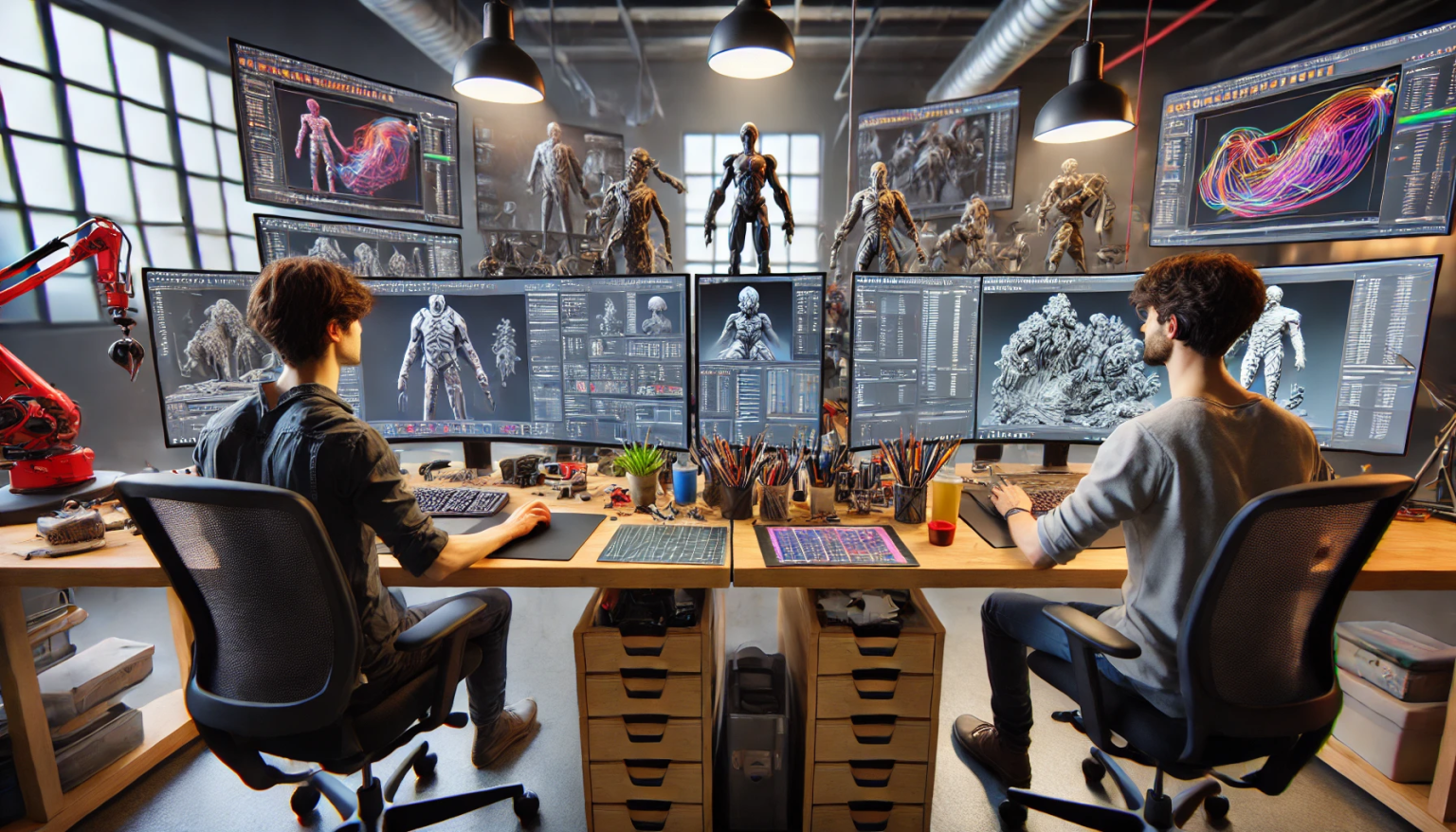In the sector of 3D modeling and animation, two names stand out as enterprise giants: Maya and Blender. According to Verified Market Research, the 3D laptop photos software program market changed into valued at USD 31.02 billion in 2024 and is predicted to develop at a CAGR of 5.50%, reaching about USD 47.6 billion by using 2031.
Whether you are venturing into 3D game asset introduction or operating on complex animations for a movie, selecting the right software program can substantially effect your workflow, creativity, and the very last product. So, how do you decide between Maya 3D vs Blender? This article will delve into the strengths and weaknesses of every, supporting you are making an informed choice on your 3D tasks.
A Brief Overview: Maya 3D vs Blender
Maya and Blender are both effective tools, but they cater to slightly extraordinary audiences and use instances.
Maya, evolved via Autodesk, is an industrial software program package that has been a staple in the three-D enterprise for decades. It’s extensively utilized in film, tv, and gaming for creating wonderful animations, fashions, and simulations. Maya’s electricity lies in its massive toolset, enterprise-wide workflows, and its integration with other Autodesk merchandise, making it a pass-to preference for large studios and professionals.
Blender, alternatively, is an open-supply three-D software that has won enormous popularity due to its accessibility, versatility, and ever-developing network. Unlike Maya, Blender is free to use, making it an appealing option for impartial artists, small studios, and hobbyists. Despite being free, Blender boasts an outstanding variety of functions, consisting of modeling, animation, sculpting, texturing, and even video modifying.
Modeling Capabilities: Detailed and Intuitive
When it comes to 3d modeling, Maya and Blender provide strong tools that could manage complicated initiatives, but they method the venture in a different way.
Maya is famed for its precision and control. Its NURBS (Non-Uniform Rational B-Splines) modeling skills permit for easy and incredibly distinct surfaces, that’s crucial in creating characters and tricky belongings. Maya’s polygon modeling tools also are pinnacle-notch, giving artists the capacity to govern geometry at a granular level.
In comparison, Blender offers a greater intuitive modeling revel in, specifically for individuals who are new to 3D design. Blender’s interface is user-friendly, and its modeling gear, while powerful, are more available. The real-time viewport rendering in Blender makes it less complicated to peer changes as you work, which can speed up the innovative technique.
Animation and Rigging: Flexibility vs. Precision
Animation is every other region in which Maya 3D vs Blender provides distinct differences.
Maya is often considered the gold widespread in animation, specifically for person rigging and complicated animations. Its advanced rigging equipment permits for unique manipulation over person motion, making it ideal for growing life-like animations. Maya’s time editor and graph editor offer an in-intensity animation timeline, permitting animators to pleasant-song each issue of their work.
Blender, at the same time as incredibly successful, gives a more flexible method to animation. Blender’s rigging tools are strong enough to address most initiatives, and its animation workflow is intuitive and artist-friendly. Blender additionally supports Grease Pencil, a unique device that allows for 2D animation within 3D surroundings, imparting an additional layer of creativity for animators.
3D Game Asset Creation: Industry Standards and Flexibility
When it comes to create 3D assets for the game, the choice among Maya and Blender often relies upon the dimensions and scope of the project.
Maya is extensively used within the gaming enterprise, in particular for growing high-quit belongings for AAA video games. Its integration with recreation engines like Unreal Engine and Unity is seamless, making an allowance for efficient asset transfer and actual-time updates.
Blender has made sizable strides in the gaming global, specifically among indie developers and smaller studios. Its all-in-one nature permits a streamlined workflow, from modeling and texturing to animation and export. Blender’s aid for PBR (Physically Based Rendering) substances and its compatibility with recreation engines make it a possible option for recreation asset advent.
Conclusion: Which Should You Choose?
The selection between Maya three-D vs Blender, in the end, comes down to your precise desires, budget, and the scope of your tasks. If you’re running in an expert environment wherein enterprise standards and superior capabilities are a must, Maya is probably the higher desire. Its precision, control, and integration with different professional tools make it the desired software for big studios and high-stop productions. However, in case you’re an independent artist, a small studio, or a person new to 3D design, Blender offers a powerful and bendy answer without the financial burden. Its accessibility, mixed with its strong characteristic set, makes it a notable choice for a huge range of tasks, from game asset creation to animation.



